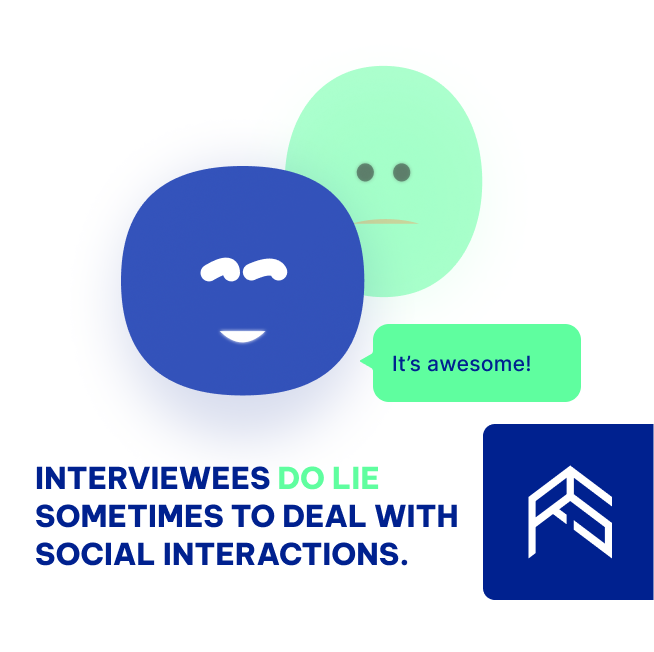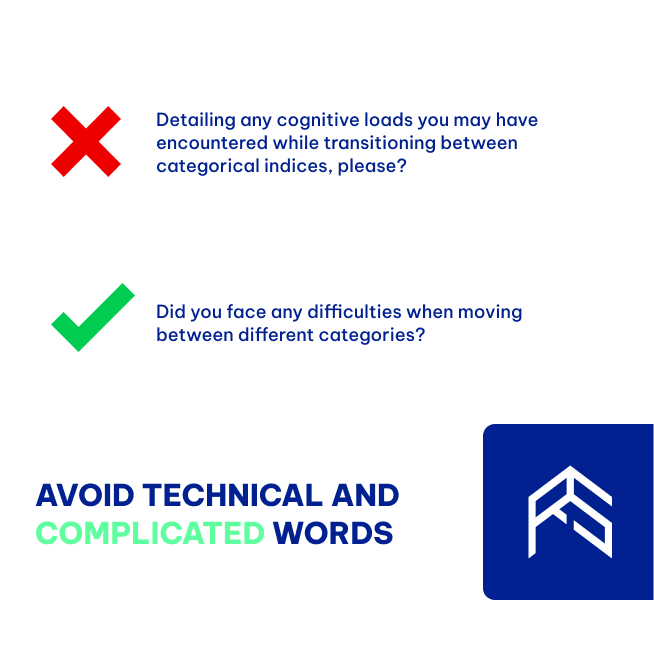Have you ever walked away from UX interviews feeling like you didn't get anything useful? You're not alone. User interviews are hard to get right and often fail to provide the insights you need. But don't give up on them yet. With some tweaks to your process, you can turn user interviews into a gold mine of information.
What could go wrong with UX interviews?
UX interviews hold the promise of uncovering the elusive truths about how people interact with your product, but they can also be a source of frustration and confusion. Here are some common pitfalls that can derail your UX interview process:
Interviewees start speaking about other people's experiences
One of the most challenging aspects of conducting user interviews is ensuring that you're getting insights directly from the person you're interviewing, rather than their interpretation of other people's experiences. It's not uncommon for interviewees to drift into stories about what their friends, family, or colleagues have encountered. While these anecdotes might be interesting, they often fail to provide the targeted insights you're seeking.
Interviewees wander off the topic
Another roadblock in UX interviews is when participants deviate from the topic at hand. They might go off on tangents, discussing unrelated issues or sharing their broader opinions about your industry or field. While this can give you a glimpse into their thought processes, it might not provide the detailed information you need to enhance your product's user experience.
Can we trust the data that was collected?
Ensuring the reliability of the data collected during UX interviews is a constant concern. Interviewees might provide inaccurate or embellished information unintentionally: misremember details, overstate their actions, or even present themselves in a more favorable light.
They do lie sometimes to deal with social interactions.
This can lead to decisions based on skewed or incomplete data, ultimately affecting the design and functionality of your product.

How to Run Better UX Interviews
Select the right source of data
The effectiveness of your UX interviews greatly hinges on the data source you select. The quality of insights you gather is only as good as the source you tap into.
Automate the Process
Everything that we do during UX research is getting the most accurate data on how people use our products. Any process that can remove the human factor will be beneficial
Incorporating automation into your user interview process can help reduce bias and inaccuracies. While human researchers can inadvertently influence responses through body language, tone, or unintentional cues, automated processes can deliver standardized questions and analyze responses without any emotional influence.
Choose interviewees who are unaware of the interview
Bringing in colleagues who are not directly involved in the interview process can be incredibly valuable. These "uninformed" participants can provide unbiased feedback and offer fresh perspectives. They can also help identify when interviewees are veering off-topic or speaking about third-party experiences.
Conduct properly
To make the most out of these interactions, it's crucial to conduct interviews in a manner that encourages candid responses and yields valuable information. A well-executed interview can uncover valuable user perspectives, pain points, and suggestions.
Provide an Open Environment
During the interview, it's crucial to establish a safe and open environment. Rather than putting them in an uncomfortable position and overwhelming them with questions, aim to conduct the interview as a casual conversation. Remind participants that it's okay to say "I don't know" or admit limited experience. This encourages them to speak authentically about their own interactions rather than relying on third-party stories.
Repeat questions and tweaks in vocabulary
If users wander off the topic, most of the chances are: they don't even understand the questions!
Crafting interview questions with simplicity and clarity is a foundational step. However, if this approach doesn't yield the desired results, you can ask the same question again but using different words. This might help get more information than before, and you can also make sure you understand what the person said. Experimenting with alternative wording or questions can make a significant difference in steering conversations back on track and eliciting the insights needed.
Avoid closed questions
Closed-ended questions can lead to short, one-word answers that fail to provide deep insights. Instead, focus on open-ended questions that encourage participants to share their thoughts, feelings, and experiences in detail. This can help you gain a more holistic understanding of their interactions with your product.
Avoid technical and complicated words

Tailor your language to match the interviewee's expertise level, not every participant would be tech-savvy. If your product is targeted at a wide range of users, avoid technical jargon that might alienate less tech-savvy participants. Ensuring that your questions are accessible can lead to more insightful responses from a diverse group of users.
Rockship AI-Powered Solution for UX Interview
Traditional interviews often fall prey to biases and inaccuracies arising from social dynamics. Users may alter responses to navigate these interactions. Our AI-powered solution revolutionizes UX interviews by automating the process with Smart AI-powered interviewers. Users can be anonymous and social interactions bow out. It means people don't have to worry about being nice or not hurting feelings – they can just be honest, open up, and provide unfiltered feedback.
Check out How Rockship uses AI to conduct UX interviews.
Conclusion
So there you have it. User interviews can be tricky to get right, but now you've got the inside scoop on why they often fail and how to avoid the common pitfalls. Remember, take the time to carefully plan your interview questions, choose a comfortable environment, build rapport, and listen without judgment. Focus on open-ended questions, watch for nonverbal cues and probe for deeper insights. If you go in prepared, stay flexible, and make the experience engaging for your users, you'll come away with valuable insights to build a great product.
Conducting a successful round of user interviews does take work, but the payoff of creating an awesome user experience is well worth the effort.



